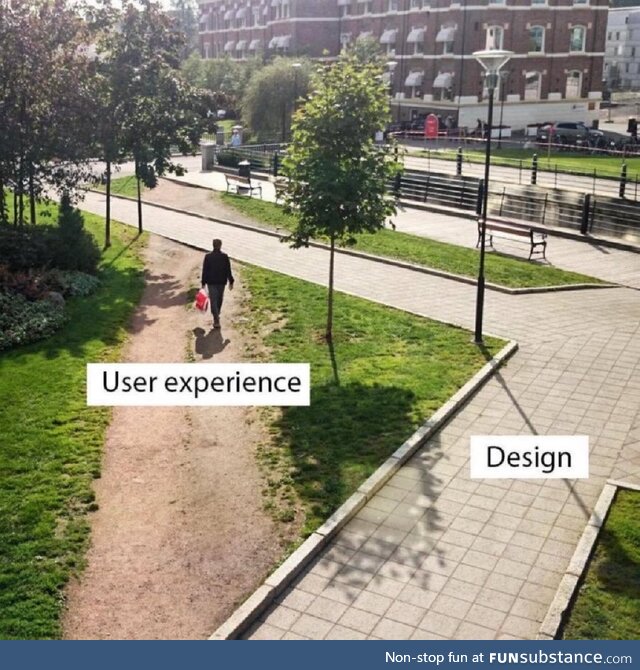Featured Posts

I wish I had a fort

The powerof positive thinking

NASA

Pray for Australia

Take care of each other

She has emerged

My soul feels so much better

I just ordered one. #Just2019HispanicThings

He really wanted his photo at the Halloween party, but was super scared of the spiders

The Only Thing More Contagious Than COVID19 Might Be This Fox's Smile
About
FAQ
Contact
Rules
Terms
Privacy
Feedback
Keyboard Shortcuts:
Previous Post · Next Post · + CTRL Skip Post
Previous Post · Next Post · + CTRL Skip Post
© 2025 FunSubstance · funny and entertaining pictures, memes, gifs & videos.



and let’s say that 9/10 users by volume have a certain use case for a program. So you might feel pretty safe to change your interface. Well….maybe not so safe.
That impacts whose budget pays the fix and who gets fired or loses bonuses or gets a “black eye” and is undermined etc.
but often times IT builds to user spec based on their requests and policies- so the UI design has to reflect those policies.
That’s where UI/UX get sticky. You can “lock down” a program. This is common in point of sale systems or warehouse systems and in jobs done by “gig contractors” but you see it other places. You design a very simple interface that can ONLY be used a specific way and has almost no flexibility.
In the end though- your end user is smarter and dumber than you can ever imagine. Outside of critical type projects- there isn’t going to generally be this period where a dedicated team of the best and brightest developers and testers spend 3 years beating the software down and finding every loop hole and optimizing everything. For most software that makes no sense. It isn’t that serious and delaying it and adding cost to treat it like your app that lets you preview AR hair cuts is the control unit for a Martian habitat or a hypersonic airliner is daffy. You do as much research and thinking and testing as suits you and then you rip it.
Resources. Not money. Different thing. If you’re walking in the deep isolated and remote desert and dehydrated and someone is selling the only water anywhere in the desert for $100 a glass the only reason not to buy is money. That sucks, but if there is NO ONE selling water and NO water- that sucks more because sometimes you just can’t realistically get what you need with money. If the water is $100 a glass but you only have $20- that’s the same as there being no water (if you can’t steal etc..)
so that team- whatever the size- that’s who they have and they may not be able to afford a larger team, not that they don’t want to pay- they can’t afford it or budget for it.
Ok. So they’re making some techno gadget like an app enabled Wi-Fi spoon or whatever crap people buy. It’s sold at Target and Best Buy and online etc. so this 300 person company might have 100,000 customers.
Bugs with the product are being reported and you need developers and QA etc. to fix those bugs. Customers, leadership, sales, product or marketing teams are asking for improvements, new features, UI changes etc.
another company has entered the Wi-Fi spoon market and they are adding features and such and to be competitive
Oh- and there is a new Wi-Fi standard coming in 12 months you’ll need to make a software change so that all current and future models can connect to devices on the new standards and the biggest trade magazine is alerting everyone that “Java.snusnu” which you and most other companies use in your software- has a critical security flaw and hackers can steal user data if it isn’t patched. Oops. Forgot to mention. Your spoon is 3 years old- so you’re also working on spoon 2.0- the next Gen product that you’ll need to stay competitive in the future and you want to beat your rivals to market AND make it in time for the big spoon buying season.
Ok- so what’s more important? Do you focus on your existing customers and the spoon 1.0 experience or do you put your resources into the future
You only have X developers/programmers and X QA and so forth- and oh yeah. Customer support escalated problems they can’t solve to your tech teams so you also need to factor in the time and people needed to continue to support your customer team…
“I always disliked it so yay!”
“Wait… but we could also change the drawer pulls in the kitchen instead..”
“Ok. Let’s do that. I hate those more…”